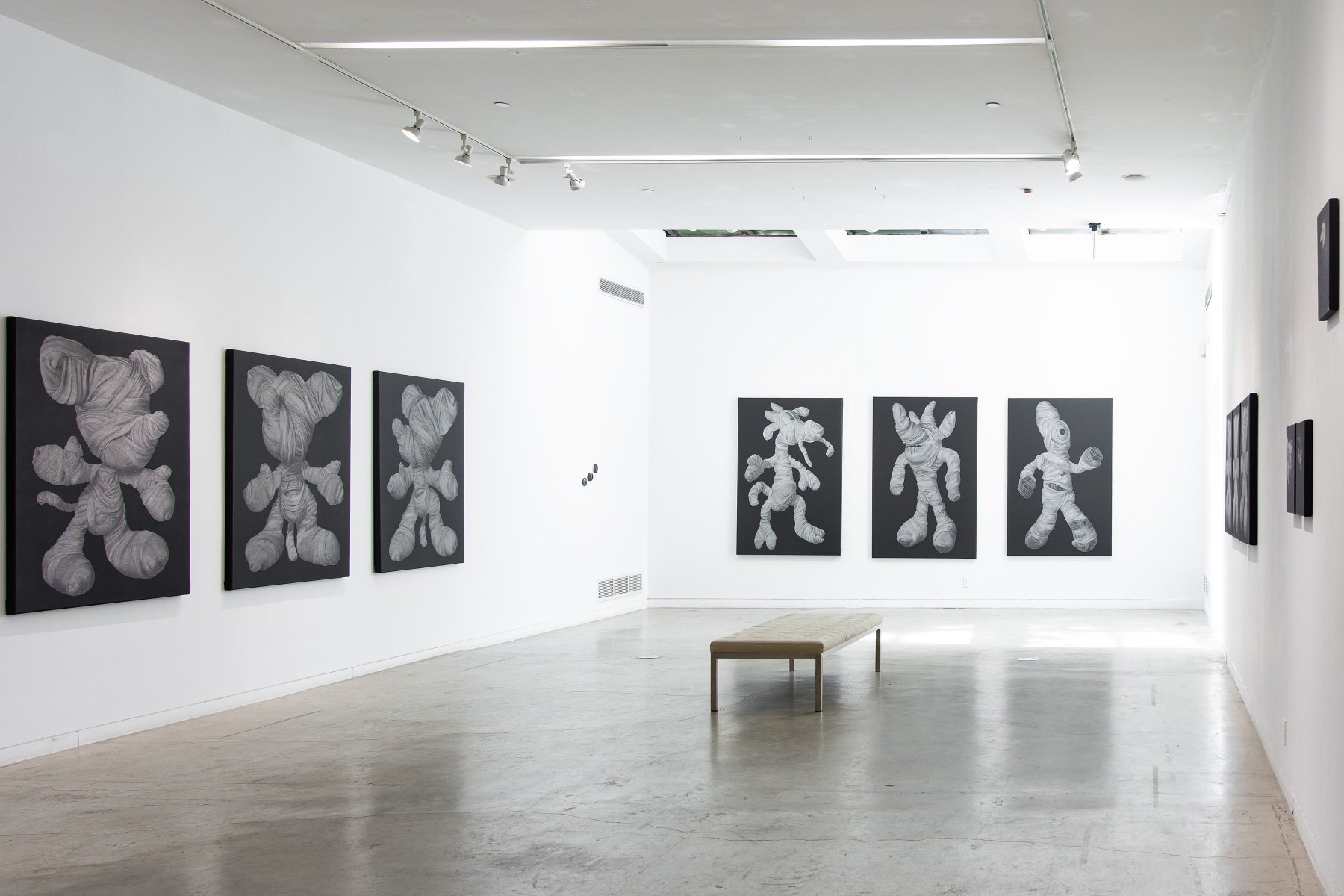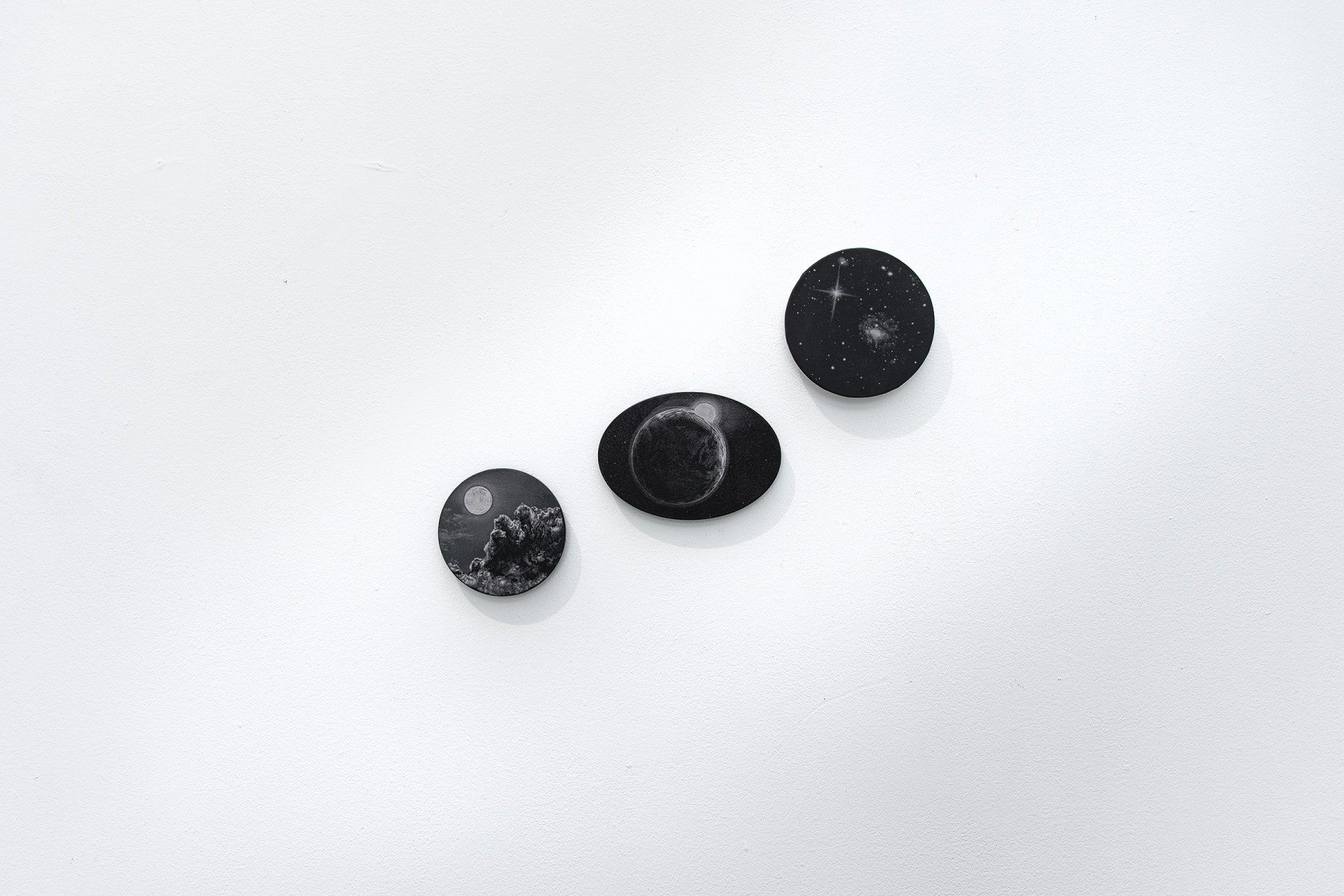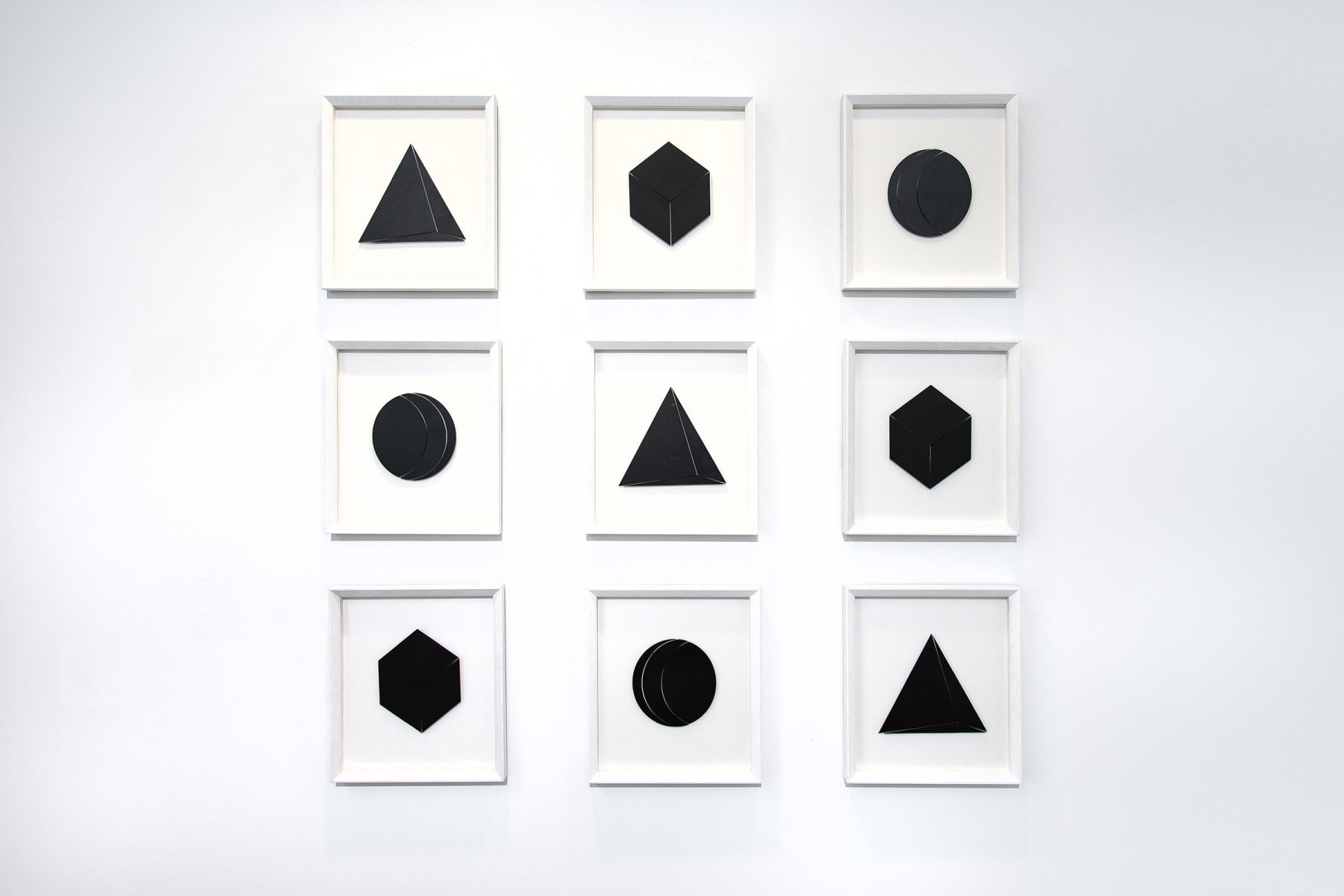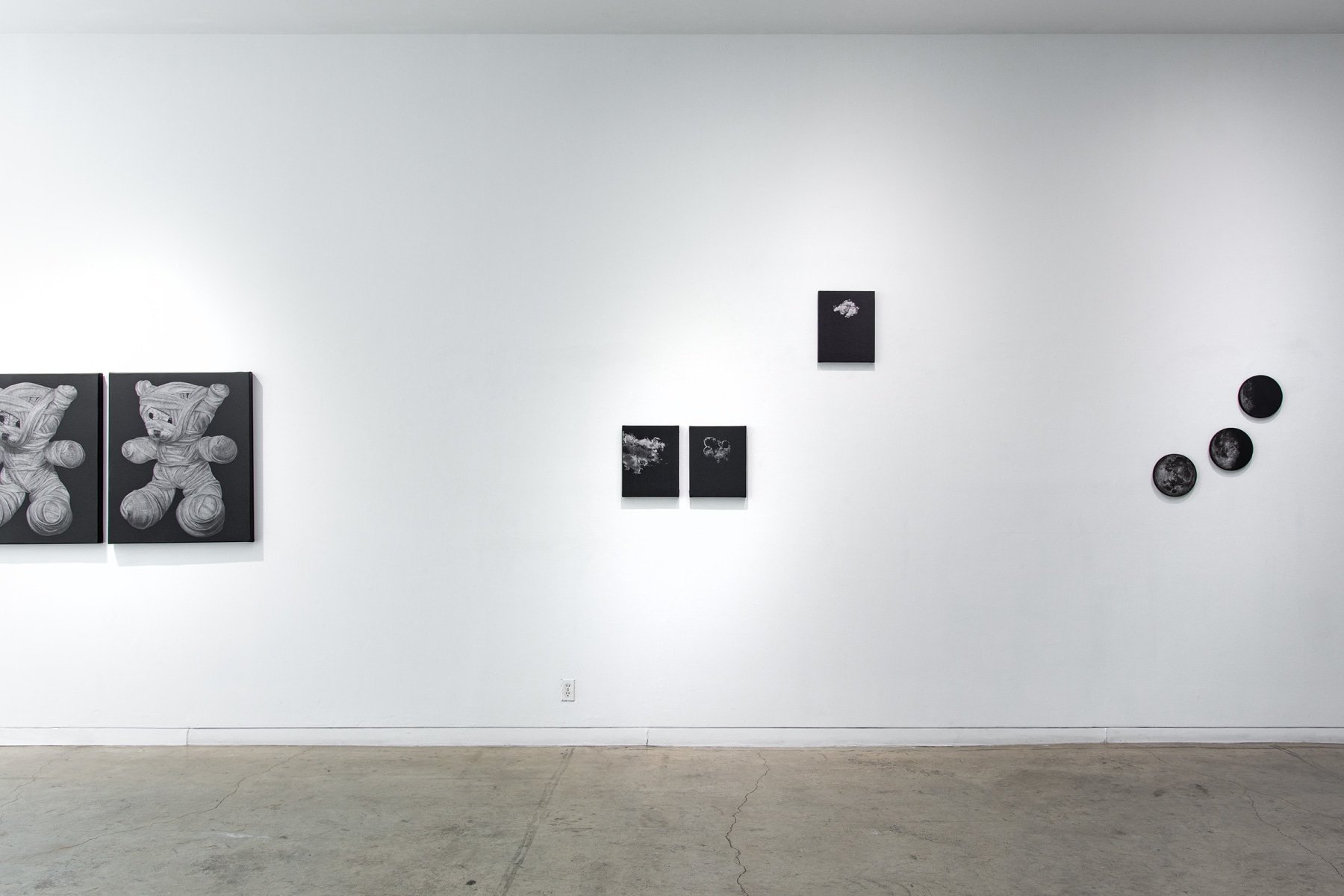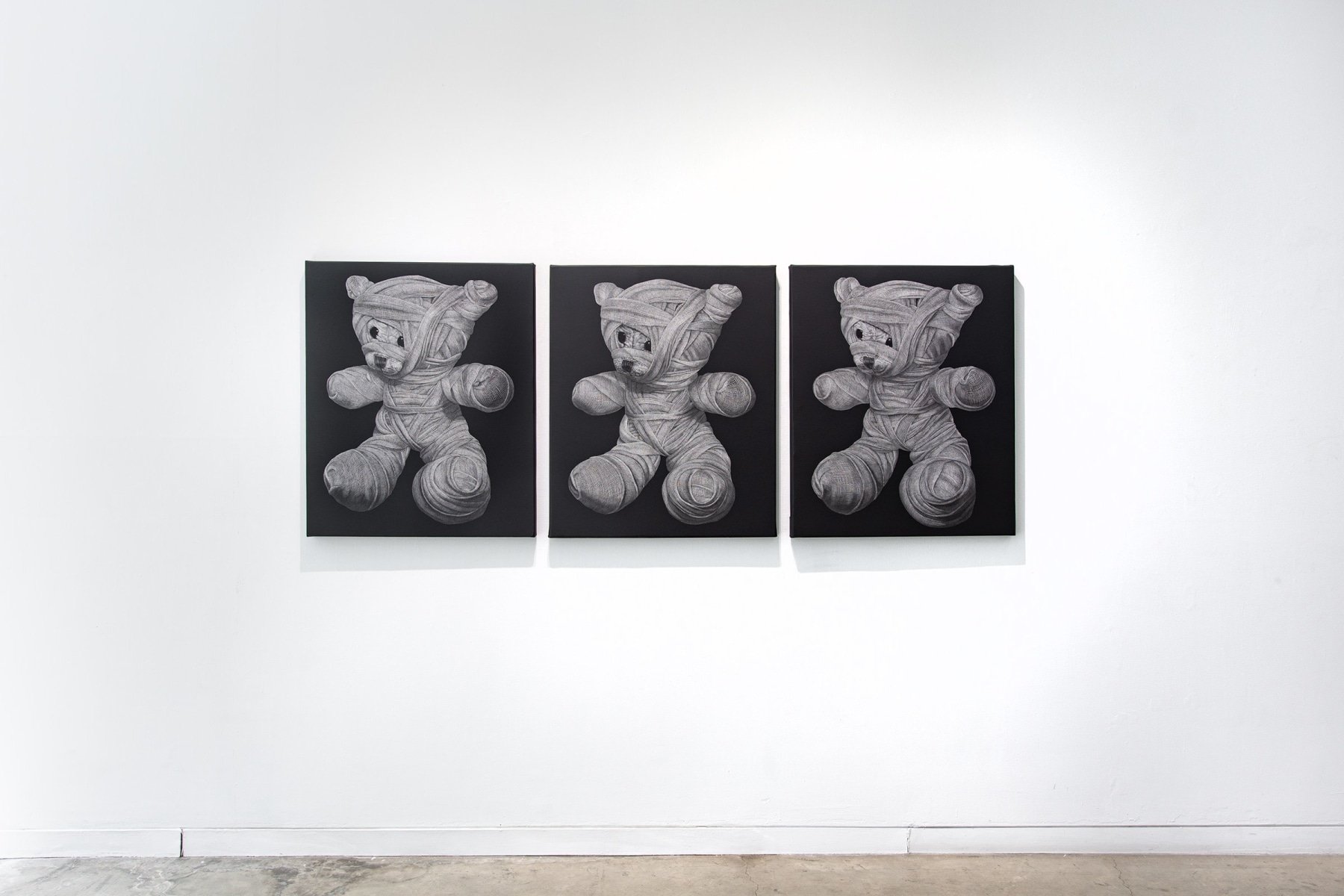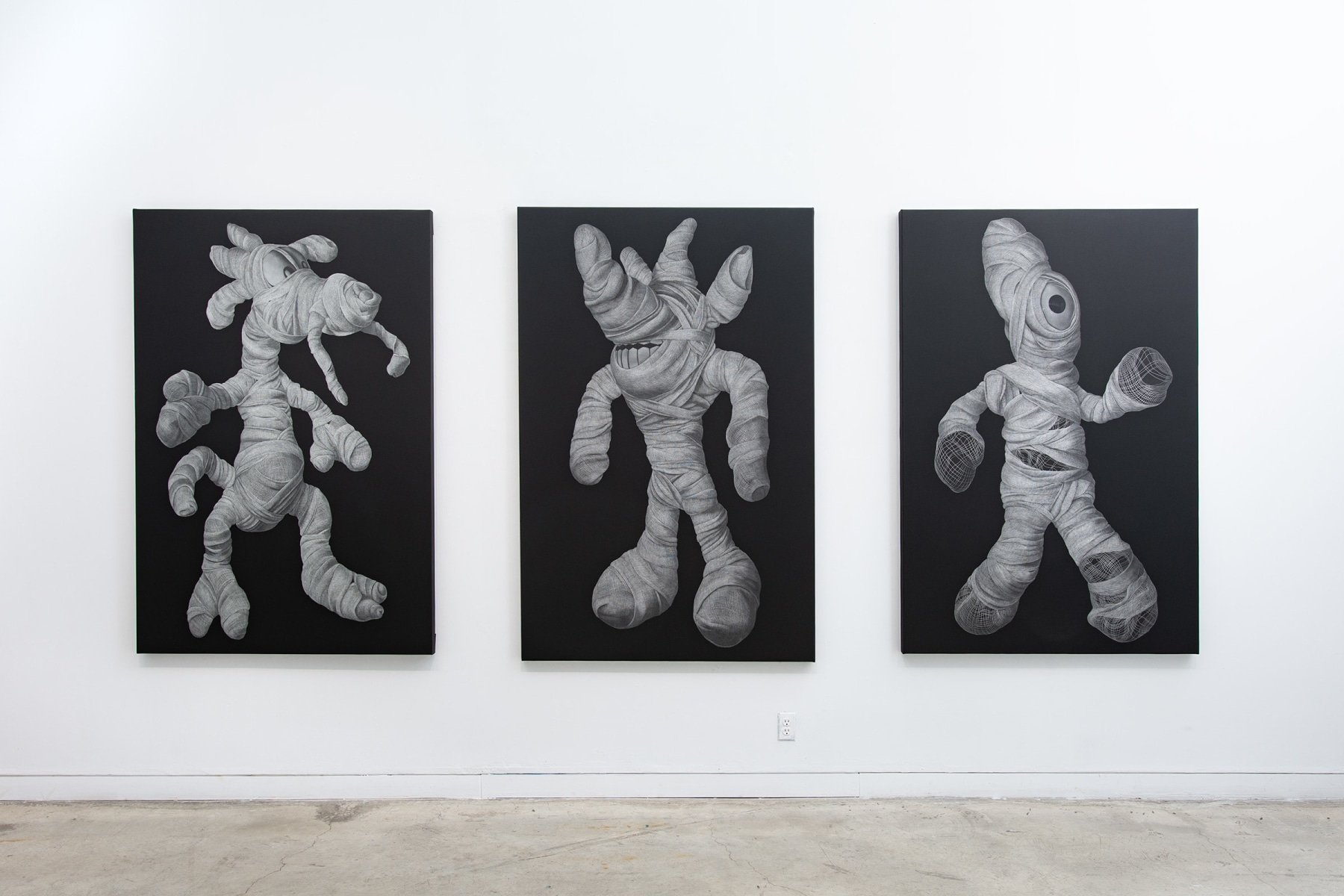Adeel Uz Zafar: Triad
Co-curated by Amethyst Rey Beaver and Sarah Burney for Aicon Contemporary. This exhibition marked the American debut of Zafar’s miniature engravings on vinyl, alongside a brand new sound installation and the latest body of his iconic monumental works.
Zafar has many subjects: plush children’s toys, the moon, clouds, starlit skies, dramatic landscapes, and geometric shapes. At first glance, these might seem disparate subjects but Zafar investigates them together to pull at a singular thread. Consider the child playing with their toy, dreaming up voices, personalities and scenarios, or the adult looking up into the sky contemplating their space in the world. Both are tabula rasas for the imagination, conduits for a suspension of reality, a brief slip into playful abstraction of thought.
Zafar’s toys are the playthings of a curious mind indeed. His Mickey, Mushu, and Teddy are bandaged to the point of mummification. Larger than life, drained of color, and floating eerily in an inky black space, they are a jarring sight: simultaneously funny, horrifying, and heartbreaking in their totemic scale and posture. Supersizing the plush toys is the artist’s way of commemorating the timelessness of his subjects, memorializing how ageless these toys have become as they befriend generation after generation.
When contemplating the heavens however, Zafar makes the monumental miniature. Viewers are encouraged to step closer and use a magnifying glass to fully experience his moons, star speckled sky, clouds, cresting wave, and vistas of mountains and desert. They are grand pictures made pocket sized: the cosmos in the palm of your hand. By inverting the scale of his subjects and juxtaposing the contradictions Zafar has created an artistic funhouse that disorients and surprises, nudging viewers into that space of childhood wonder and imagination.
Repeatedly drawing the same object has allowed Zafar to meditate on the infinite possibilities within his subjects, to dwell on the limitless patterns within the weave of his gauze just as he would in passing clouds — finding order and shapes in randomness. In shrinking his celestial vistas Zafar underscores his belief that the infinite need not be monumental. The miniature grid of gauze however seems to be his preferred medium to explore the infinite. His toys are obsessively wrapped in gauze, his geometric collages have the pattern of the cloth’s loose, open weave inscribed on their surfaces, and the triptych Script is a close-up of the fiber, devoted entirely to its undulating pattern. Titling the gauze triptych Script simultaneously acknowledges the limitless possibilities within language and begs the question: is Zafar positioning bandage as text or text as a bandage? Does it heal or obfuscate? We are unlikely to find clear answers from Zafar. The artist is reticent about being prescriptive and purposefully leaves room for ambiguity and personal reflection.
Zafar arrives at this space of abstract contemplation and reflection through a devotion to a process of his own making: engraving on a coated vinyl surface. It is a reductive process that reveals a fine white line with each scratch. Building a web of gauze or dimpled moon in this process is a feat of labor and patience. It is a cathartic and meditative act for Zafar, a ritualistic performance that pays homage to the Islamic art of calligraphic mashq, and brings him in the company of craft artisans. Zafar revels in the slowness of his process, savoring even the sound of his technique, which he has preserved for us in his sound piece Glitch.
Zafar tests the limits of his patience through repetition; questioning how closely he can recreate an engraving and how often he can draw an object before he loses interest. Recently he has been working in threes; born on the third day of the third month of the year, a child of three, and father to three children, Zafar feels a personal pull to the number. While many viewers might see a trinity in his compositions, Zafar pushes back from religious associations. He is drawn to the narrative possibilities of three: the beginning, the middle, the end, the framework and balance of a trilogy, the harmony of a triad.
On view from April 25 – May 18, 2024.
